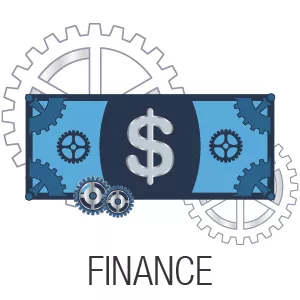Slower rate of growth anticipated for Spokane-area financial institutions
Deposits, loan demand have declined industrywide

Most financial institutions, including banks and credit unions, will continue to see a slowdown in deposits with overall negative growth in 2024, according to some financial industry representatives here.
"Negative growth is forecasted by economists, major banking, and research groups," says Lindsey Myhre, executive vice president and chief financial officer of Liberty Lake-based STCU. "Deposits have slowed down. However, they ended a little stronger than anticipated."
Myhre says that banks and credit unions have experienced increased spending from members and customers, driving down deposits. With continued inflation that hikes prices, people typically are drawing from their savings instead of changing their spending habits, she says.
Vange Ocasio Hochheimer, professor of economics and finance at Whitworth University, says 2024 will have slower growth, but she also anticipates potentially confusing data that is common during presidential election years.
"I expect that volatile data to last," she says. "There's lots of instability in the House and the Senate that has an impact on the economy and markets."
Steve Scranton, chief investment officer and economist for Washington Trust Bank, says that after the collapse of three high-profile regional banks last spring, some customers pulled or spread their deposits to other institutions when worried about further collapse. In the second half of the year, data from the Federal Deposit Insurance Corp. shows that deposits stabilized and rose slightly, but aren't where they used to be, he says.
"People realized that the scare over Silicon Valley ... was really what you call a unicorn bank and has a completely different structure than traditional banks," he says. "Deposits are stable, but really from the peak of where they were in April 2022, deposits at financial institutions as a whole are down about $750 billion."
According to the FDIC's third-quarter report, total deposits declined for the sixth consecutive quarter. Between the second and third quarter of 2023, deposits declined by $90.4 billion, the report states.
Interest rates have slowed loan demand in 2023, and that demand likely will continue to slow, says Scranton.
Since March of 2022, the Federal Reserve has raised interest rates 11 times. Currently, the rate is set at a range of 5.25% to 5.5%. The campaign is aimed at lowering inflation to its 2% objective.
According to the Bureau of Labor Statistics, the current rate of inflation is 3.14%, down from 9% in June of 2022.
In the Federal Reserve's final meeting of the year on Dec. 13, the committee left rates unchanged for the third consecutive time this year.
"My main takeaway is that the Federal Reserve is saying it's done raising interest rates unless something happens to inflation that it is not anticipating," says Scranton.
Depending on how the economy and inflation progress, the Federal Reserve also indicated that they would cut interest rates, yet without a clear consensus of when and by how much, says Scranton.
The decision was widely anticipated, says Scranton. For now, the message is they are done raising interest rates but not ready to start lowering them.


_c.webp?t=1763626051)

_web.webp?t=1764835652)
